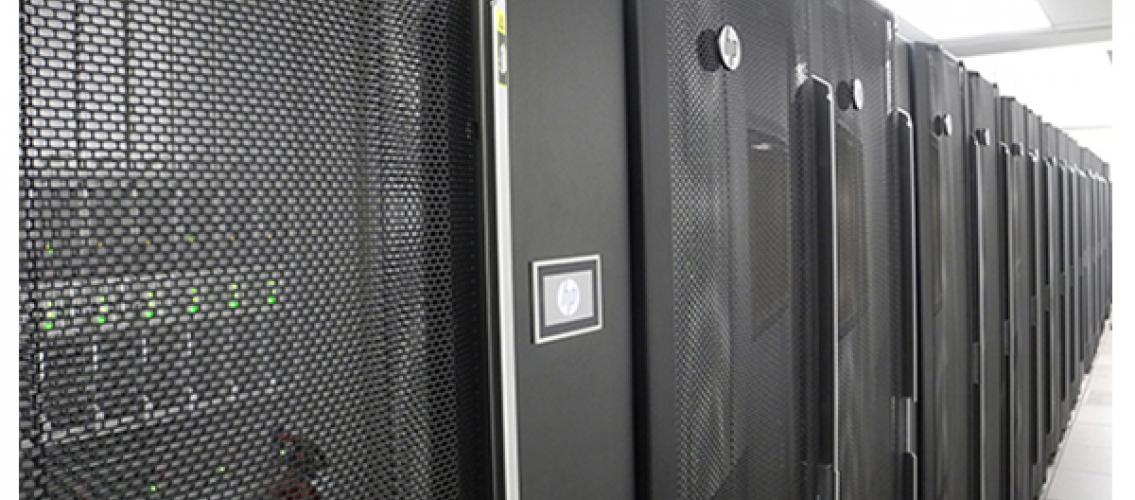Mesabi, MSI's New Supercomputer
Mesabi is a heterogeneous compute system built by HP. Heterogeneous systems incorporate more than one type of processor. This increases performance by allowing specialized processors to handle specific tasks. Mesabi features an HP Apollo 6000 system with Intel Haswell processors and solid-state drives (SSDs), Mellanox Extended Data Rate (EDR) switching, and NVIDIA Graphics Processing Units (GPUs). MSI has also purchased 1 PB of Panasas storage for the system.

Mesabi by the numbers:
- Rated at 352 kW of power (enough to power 270 houses).
- 1.2 million BTUs required for cooling.
- Seven times as powerful as MSI’s Itasca supercomputer.
- More than 62 TB of memory.
- 480 Gbits/second connectivity to Panasas storage.
During the recent MSI Research Exhibition, several MSI users from diverse fields presented work that they will be transferring to Mesabi. Some examples are below:
Benjamin Brummel is a graduate student in the research group of Jonathan Sachs (Biomedical Engineering). Among other projects, the Sachs group is studying α-Synuclein, a protein found in the human brain that is associated with Parkinson’s disease. Mr. Brummel presented a poster titled “Lipids with one saturated and one polyunsaturated DHA chain homogenize lipid rafts and affect the membrane environment of α-Synuclein” (Benjamin E. Brummel, Anthony R. Braun, Jonathan N. Sachs).
Christine Dunbar is a post-doc in MSI Fellow Christopher Cramer’s research group. Professor Cramer is in the Department of Chemistry and is also a member of the Center for Sustainable Polymers and the Chemical Theory Center. Dr. Dunbar presented a poster describing research into sustainable alternatives to petroleum-based polymers (Christine R. Dunbar and Christopher J. Cramer. “Quantum chemical analysis of the mechanisms of epoxide/anhydride copolymerization using metal catalysts.”) The Cramer group develops and applies computational models to study chemical structures, properties, and reactivities in areas of chemical, biological, and environmental interest.
Chris Tessum is a post-doc in the group of Julian Marshall (Civil, Environmental, and Geo- Engineering; Fellow, Institute on the Environment) and Jason Hill (Bioproducts and Biosystems Engineering; Fellow, Institute on the Environment). This group uses models on the supercomputers to study the impacts on air pollution of different types of alternative fuels. They correlate changes made in the transport sector to air quality and public health. Dr. Tessum presented a poster describing how future use of conventional and alternative fuels may impact inequality and injustice in health effects related to air pollution (Christopher Tessum, Jason Hill, Julian Marshall. “Environmental justice and equality aspects of conventional and alternative light-duty transportation in the United States.”).
The name Mesabi was selected by MSI staff from over 140 suggestions from MSI users and others at the U. The Mesabi Range is the largest of the four major iron deposits in northern Minnesota that collectively make up the area known as the Iron Range. It is the chief deposit of iron ore in the U.S. The name comes from an Ojibwe word meaning “immense mountain.” The name reflects Minnesota’s cultural heritage and natural resources and ties in to an informal term for supercomputers, “Big Iron.”
See photos from the dedication ceremony: Mesabi Dedication. Articles about Mesabi have appeared on the OVPR Inquiry blog and on the University’s Discover blog.